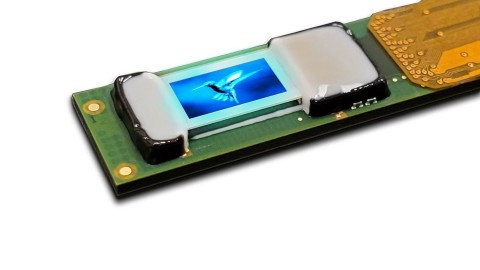Compound Photonics (CP), a U.S.-based AR/MR microdisplay solutions developer, announced the launch of its digital backplane which enables Micro LED technology builder for high definition microdisplay subsystem integration.
CP re-engineered its market-ready LCoS backplane technology into an innovative constant current drive configuration for Micro LED pixels based on its 0.26-inch (~3 μm pixel) 1080p display format. The technology can be integrated with Micro LED displays to accelerate the manufacture process by bonding the devices to a backplane driven by CP’s NOVA display drive architecture. CP noted that the display subsystems meet AR requirements for compactness, optical performance and brightness with high frame rate, low latency and low power consumption.

(Image: Compund Photonics)
Compound Photonics has collaborated with Micro LED AR display specialist Plessey and revealed their co-developed 0.26-inch integrated Micro LED display module for AR/MR applications in February, 2020. Ian Kyles, CP Vice President of Electrical/Software Engineering, commented, “Our custom, constant current pixel circuit design provides greater tolerance to forward voltage variation and IR drops in the Micro LED array resulting in a previously unattainable level of uniformity. It additionally features globally on-the-fly programmable pixel current control that greatly increases the system bandwidth, enabling higher frame rates while maintaining full bit depth.” He also noted that the backplane has additional steering pixels beyond its native 2048x1080 resolution to enhance alignment/integration of the display within the optical system.
Andrew Shih, CP’s Marketing and Business Development Manager continued, “Process integration compatibility is also important, as bonding of the Micro LED array to the backplane requires a highly planar interface. CP’s backplane wafers feature excellent planarity, a direct benefit from extensive process tuning work to meet earlier LCoS requirements. By partnering with CP, whose backplane technology facilitates both wafer level process integration and a direct path to a complete NOVA-based microdisplay subsystem solution, microLED developers can focus on their core competencies in compound semiconductor photonic device engineering and process development while reducing development time and cost.”





 CN
TW
EN
CN
TW
EN






